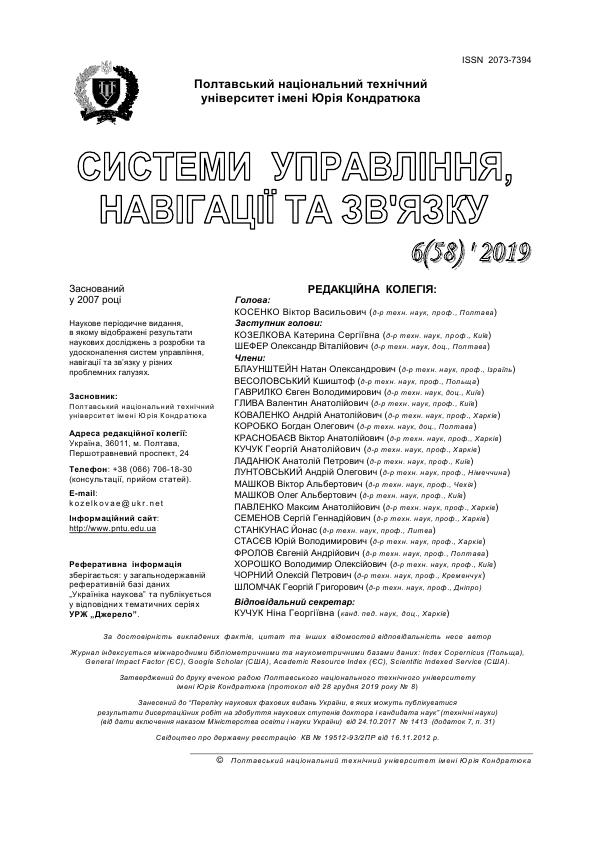MODELING EXPLANATIONS FOR THE RECOMMENDED LIST OF ITEMS BASED ON THE TEMPORAL DIMENSION OF USER CHOICE
DOI:
https://doi.org/10.26906/SUNZ.2019.6.097Keywords:
recommender systems, e-commerce systems, explanation, formation of recommendations, formation of explanations, criteria for evaluating explanations, temporal dependenciesAbstract
The subject matter of the article is the process of generating explanations for the recommended list of goods and services in recommendation systems. The goal is to develop models for explaining the recommended list of goods and services, considering the changing interests of users over time. Tasks: justify the selection of criteria for evaluating the explanations; to develop a generalized explanation model that considers the trust of the user, as well as changes in sales of goods and services. The approaches used are: approaches to constructing recommendations based on the similarity of user choices, as well as characteristics of user choice objects. The following results are obtained. A comparative analysis of the criteria for evaluating the explanations is carried out and the choice of criteria for trust and performance as key for modeling the explanations, considering the temporal aspect of the user's choice, is justified. Models for the presentation of explanations in the form of a numerical indicator, the value of which characterizes changes in sales over a given period of time, and the sign of explanation determines the direction of these changes - increase or decrease. Conclusions. The scientific novelty of the results is as follows. An explanation model for recommendations is proposed. The explanation is represented by a numeric indicator that considers changes in sales of goods and services between the intervals of time detail for a given period of time. The explanation considers the change in sales of the selected product at successive time intervals for a given level of detail, as well as changes in sales for all intervals in the selected time period compared to the current interval. The proposed numerical representation of the explanation makes it possible to simultaneously satisfy the criteria of trust and the effectiveness of the explanations: the sign of the indicator meets the criterion of trust, and the value gives the opportunity to evaluate the performance of the recommendation system. In practical terms, the presented explanation makes it possible to substantiate the recommendation even in the case of shilling attacks and in the situation of a cold start of the recommendation system, since objective information on purchases of the selected product for a given period of time is used as input data.Downloads
References
Ricci F., Rokach L., Shapira B. (2015). Recommender systems. Handbook, 1008 p.
C. Aggarwal (2017) Recommender Systems: The Textbook, New York: Springer, 498 p.
Linden G., Smith B. and York J. (2003), “Amazon.com recommendations: Item-to-item collaborative filtering”, Internet Computing, IEEE 7, 1, pp. 76–80.
Saga, R., Hayashi, Y., and Tsuji, H. (2008), Hotel Recommender System based on User’s Preference Transition, IEEE International Conference on Systems, Man and Cybernetics (IEEE/SMC 2008), 2437- 442.
Lika B., Kolomvatsos K., Hadjiefthymiades S. (2014). Facing the cold start problem in recommender systems. Expert Systems with Applications, Vol. 41(4), pp. 2065-2073.
Bernardi L. et al. (2015)/ The Continuous cold start problem in e-commerce recommender systems. The Computing Research Repository (CoRR) in arXiv, Vol. 1508.01177, pp. 1-6.
Chalyi S., Leshchynskyi V., Leshchynska I. (2019). Method of forming recommendations using temporal constraints in a situation of cyclic cold start of the recommendation system. EUREKA: Physics and Engineering, 4, 34-40 DOI:10.21303/2461-4262.2019.00952.
I. Shilling “Attack detection for recommender systems based on credibility of group users and rating time series”, https://doi.org/10.1371/journal.pone.0196533 [Published: May 9, 2018].
Chala O., Novikova L., Chernyshova L. (2019). Method for detecting shilling attacks in e-commerce systems using weighted temporal rules. EUREKA: Physics and Engineering, 5, 29-36.
Cleger-Tamayo, J. M. Fernandez-Luna, J. F Huete (2012) “Explaining neighborhood-based recommendations”, in the 35th International ACM SIGIR conference on Research and development in information retrieval, ACM, 2012, pp. 1063–1064.
Cunningham, P., Doyle, D., Loughrey, J. (2003) An Evaluation of the Usefulness of Case-Based Reasoning Explanation. In: Case-Based Reasoning Research and Development:Proceedings ICCBR. Number 2689 in LNAI, Trondheim, Springer, pp. 122–130.
N Tintarev, J Masthoff (2007). A Survey of Explanations in Recommender Systems. In G Uchyigit (ed), Workshop on Recommender Systems and Intelligent User Interfaces associated with ICDE’07, pp. 801-810.
Tintarev N., Masthoff J. (2010) Designing and evaluating explanations for recommender systems, in Ricci, F. Rokach, L. Shapira, B. and Kantor, P. (Eds.), Recommender systems handbook, Springer, Dordrecht, 479–510.
N. Tintarev, J. Masthoff “Evaluating the effectiveness of explanations for recommender systems”, in User Modeling and User-Adapted Interaction, 2012, No 22(4), pp.399–439.
Levykin V., Chala O. (2018). Development of a method of probabilistic inference of sequences of business process activities to support business process management. Eastern-European Journal of Enterprise Technologies, 5/3(95), 16-24. DOI: 10.15587/1729-4061.2018.142664.
Чалий С.Ф., Лещинський В.О., Лещинська І.О. (2018). Моделювання контексту в рекомендаційних системах. Проблеми інформаційних технологій, 1(023), 21-26.
Чалий С.Ф., Лещинський В.О., Лещинська І.О. (2018). Інтеграція локальних контекстів споживачів в рекомендаційних системах на основі відношень еквівалентності, схожості та сумісності. Process mining Materials of the VII International Scientific Conference «Information-Сontrol System and Technologies»,142-144.




